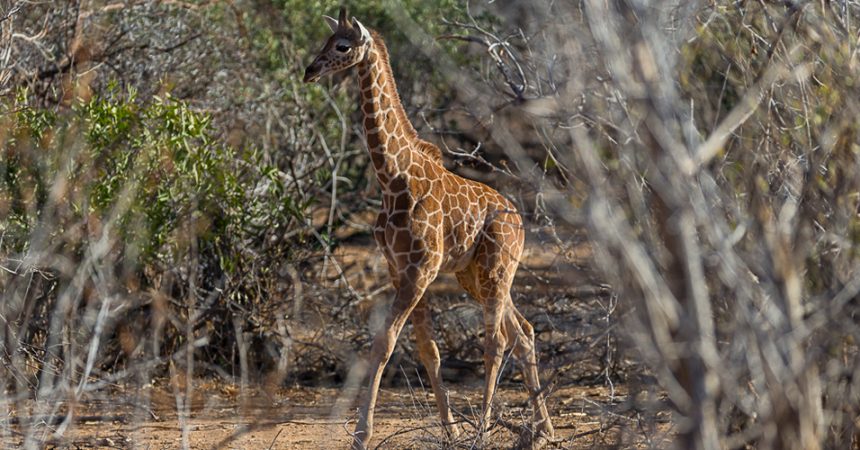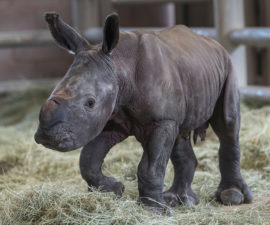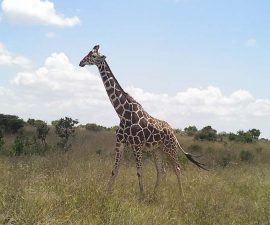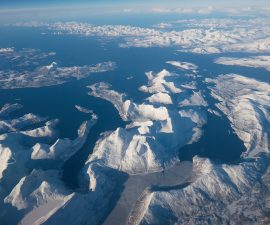“Oloiborr! Good to see you again, my friend,” said Symon Masiaine, the Kenya Giraffe Program coordinator and chief researcher for our new collaborative giraffe conservation program in northern Kenya. Symon said this while squeezed into the slightly too small driver’s seat of our Land Rover, as we descended the track in northern Kenya. He said this as if it was a coincidence that we met up with Oloiborr, but I reckon he planned it.
Symon, from the Laikipian Maasai tribe, is an experienced and talented conservation researcher who has been with us since we kicked off the giraffe program in May 2016 (for more on Symon, check out this interview). Oloiborr (the maa word for white) was the very first giraffe we had identified and photographed. Oloiborr is a dignified older male giraffe, and he is very recognizable, as his face is very white.
I was back in Kenya a few weeks ago, working on some other conservation initiatives for San Diego Zoo Global, and I was glad to be able to briefly spend time with the giraffe team. Catching up two months after we started was fantastic.
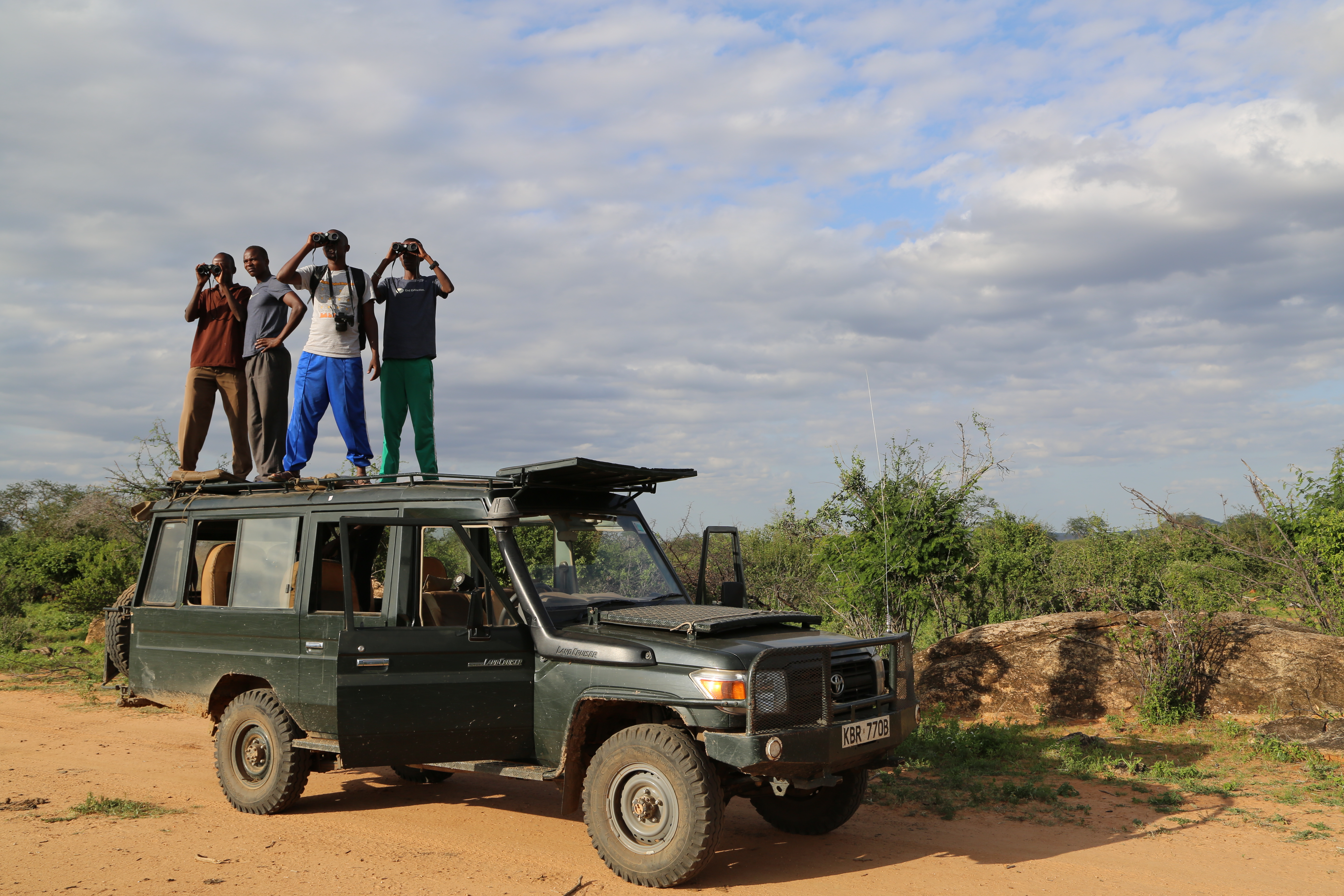
photo by Kirstie Ruppert
This collaborative work was launched at two sites—Loisaba and Namunyak in northern Kenya—and it focuses on conservation of reticulated giraffes. Already at Loisaba, Symon has identified 50 different individual giraffes, gathering vital full profile photos of each giraffe. That allows us to use pattern recognition software on their coat patterns to identify individuals, just like fingerprints. Symon has also been tracking those individuals using geo-located photos and images from our 50 camera traps across the site. In addition, Symon has been leading the regional work, and meeting with the Mzee (elders) of the surrounding communities, to learn from them about giraffes and understand their challenges.
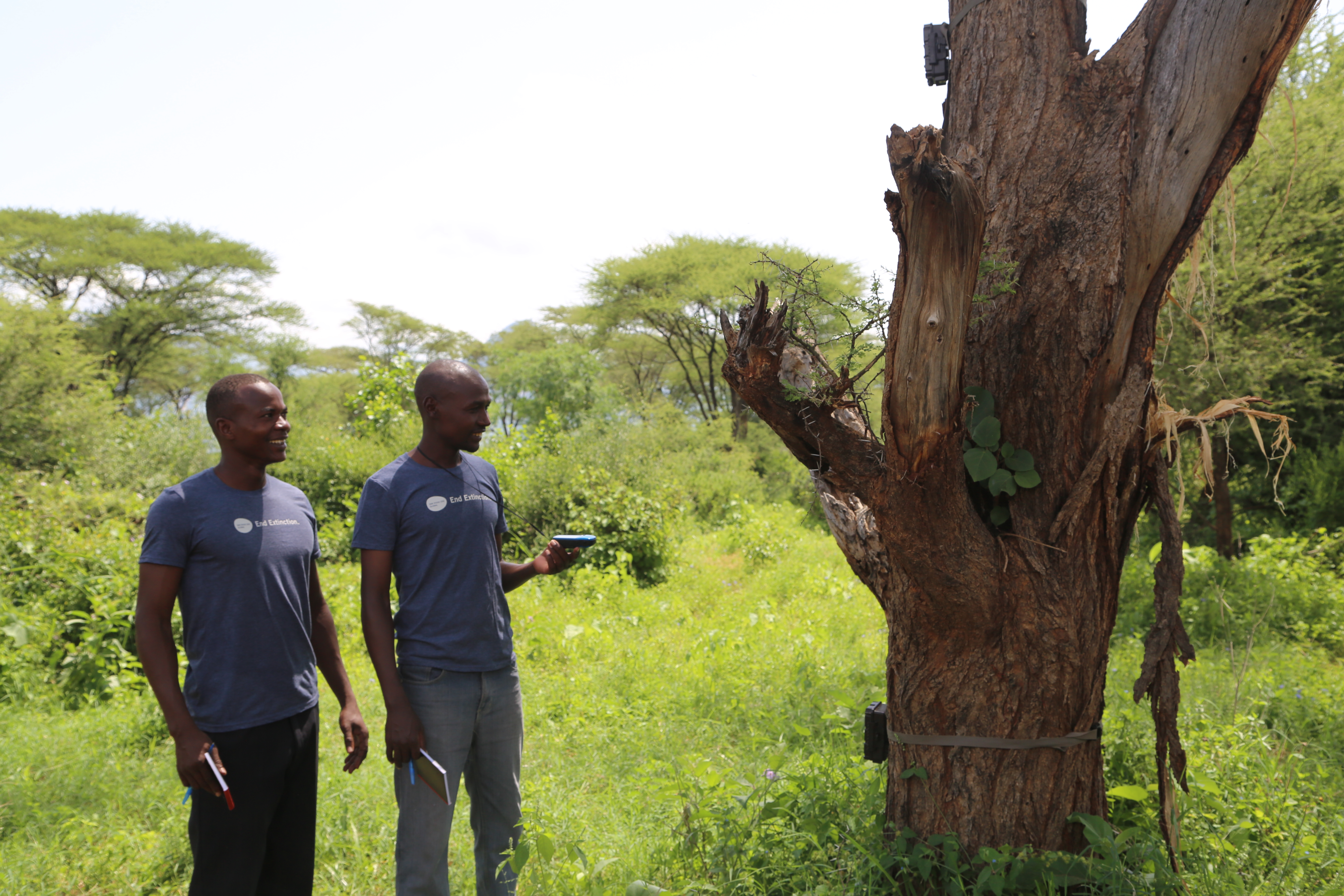
photo by Kirstie Ruppert
The team in Namunyak—which currently includes Daniel Lenaipa Johnston Lekushan and Jonathan Lenyakopiro has been equally successful. The entire Namunyak team is from Namunyak, and they are Samburu. The setting in Namunyak is more challenging, as we haven’t yet raised enough for a vehicle. So, they are monitoring giraffes and building the photo ID catalog for the giraffes on foot, often patrolling with the rangers and camping out in the bush (and they have already been chased by numerous elephants). The vegetation there is much more dense, and the terrain is more challenging. Despite this, under Symon’s guidance and training, the team has gathered numerous giraffe IDs, placed 50 camera traps, and conducted the pilot human dimensions questionnaire surveys with communities in Namunyak.

photo by David O’Connor
Our work on giraffe conservation took on even more importance about two weeks ago, with the incredible announcement by our collaborators at the Giraffe Conservation Foundation that their groundbreaking study on giraffe genetics showed that there are in fact not one, but four totally separate giraffe species! Each is as different from the others as “polar bears are from brown bears.” To me, the fact that we are just finding out there are four species of giraffe—in 2016—is mind-blowing, especially as giraffe are iconic and so well known around the world. It also underscores one of the big challenges we face in giraffe conservation—that, compared to other famous mammals, we know very, very little about them—and this is a big problem when trying to protect them.
Giraffes are in trouble. Collectively for all four giraffe species, it’s estimated that they’ve declined by about 40 percent in just the past few decades. They are already extinct in seven African countries. If it becomes widely accepted that there are four species of giraffe, one of the new species will be the reticulated giraffe, which is the species of giraffe we are focused on in northern Kenya. This species (formerly considered a subspecies) has declined a by staggering 70 percent or so, with only 8,000 to 10,000 estimated to remain in the wild. As such reticulated giraffe is now one of the most imperiled large mammals on the planet.

photo by David O’Connor
The biggest threats we believe exist for the reticulated giraffe are habitat loss and fragmentation, land degradation (due to overgrazing), and heavy poaching. In response to this, along with our collaborators, Symon and team are monitoring giraffes every day, learning more about basic things such as how many are there, where they are going, and how far they range—as well as learning from people where they see giraffe, where they see poaching, and whether or not they consume giraffe. In addition, the giraffe team is providing extra eyes in the field to report poachers, and they are actively identifying and removing snares.
I don’t have the vocabulary to properly express how important this work is, how incredible the giraffe team members in Kenya are, and how much they are doing in challenging circumstances. Not only are they helping us learn more about giraffes, they are also actively protecting them—as well as engaging with and working with communities who live with giraffes every day.
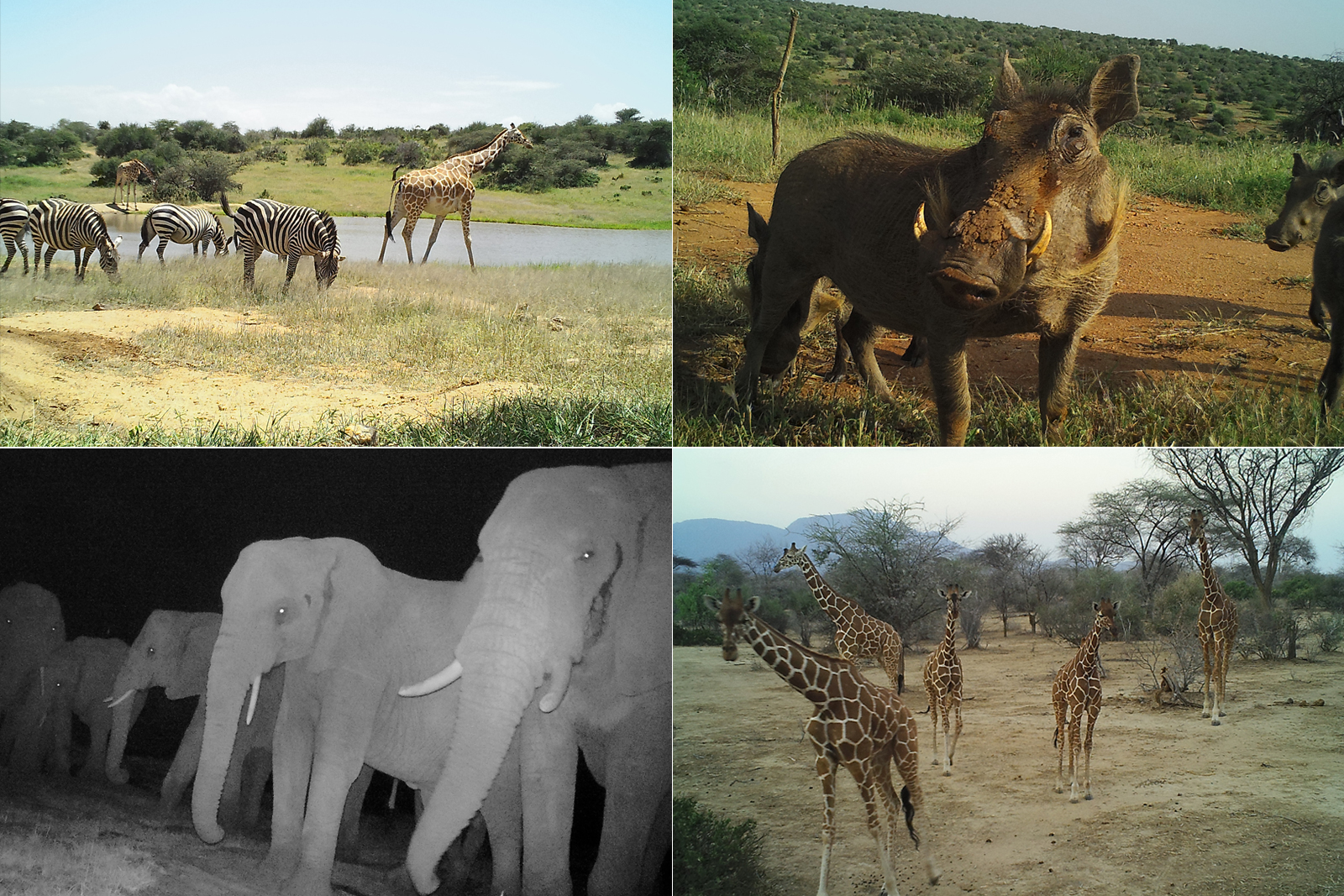
camera trap images
My colleague at San Diego Zoo Global, research coordinator Kirstie Ruppert, will head back out to Kenya in October to catch up with Symon and the team, launch a second phase of the project, and collect the data and photographs amassed to date. The camera traps are incredible: we had over 250,000 images from our pilot this spring, and that was just from 30 cameras. We have 100 going now, gathering the key data on giraffes, as well as all other wildlife. Kirstie will also be assisting in hiring and training two more local people to join the team! We’re expanding, and that is good—not only for giraffes, but also for communities that are directly benefiting from giraffes. They’re giving them jobs!
“You knew Oloiborr would be here didn’t you?” I asked Symon. “I had a feeling,” Symon answered.
It was far more than a feeling; it was a result of countless hours of hard work, coupled with deep conservation knowledge. We, and giraffes, are extremely lucky to be working alongside this incredibly talented team, securing a safe and sustainable future for this newly identified species.
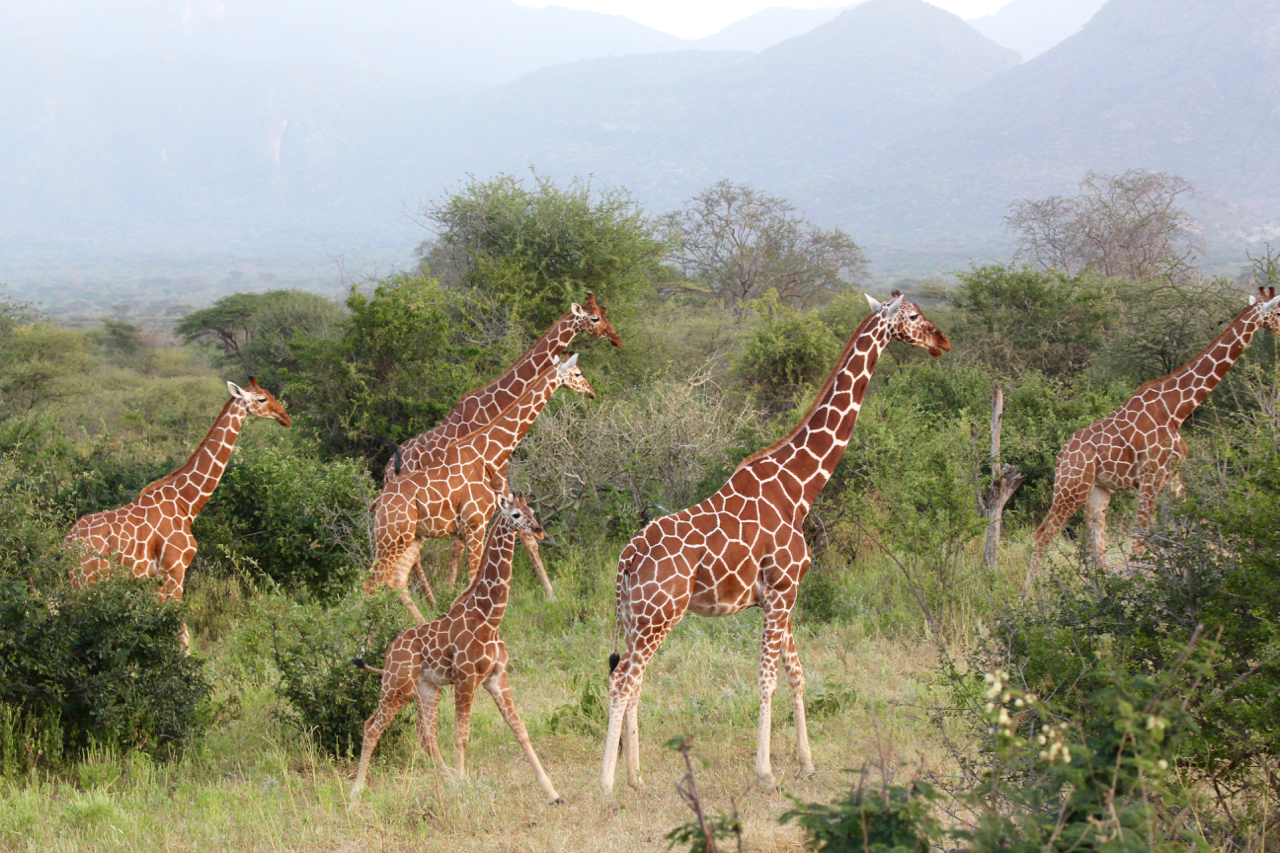
photo by David O’Connor
The Giraffe Conservation Project Collaborative includes Giraffe Conservation Foundation, giraffeconservation.org; The Northern Rangelands Trust, nrt-kenya.org; Namunyak Conservancy, nrt-kenya.org/namunyak; Loisaba Conservancy, loisaba.com; Lewa Conservancy, lewa.org; The Nature Conservancy, nature.org/ourinitiatives/regions/africa/; Sarara Camp, sarara.co; Global Conservation Force, globalconservationforce.org; and San Diego Zoo Global sandiegozooglobal.org.
David O’Connor is a research coordinator at the San Diego Zoo Institute for Conservation Research. Read his previous blog, Defending the Towers.

